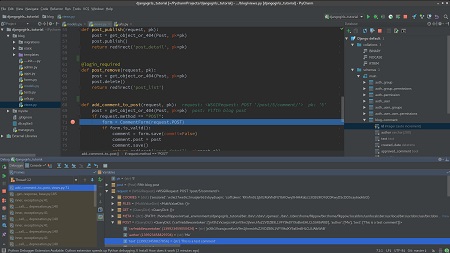
English | MP4 | AVC 1280×720 | AAC 44KHz 2ch | 2 Hours | 309 MB
Once you have learned the foundations of Python, the next step to increase your productivity is learning how to be proficient with a development environment or IDE. This course will help you get started.
Learning and becoming proficient with Python is one of the best decisions a coder can make. The simplicity of Python, along with the many libraries available make it one of the most productive languages you can use. This course, Programming Python Using an IDE, will help you use an IDE to take your coding skills one level higher! First, you will explore the selection of popular IDEs and how they can help you improve your productivity. Next, you will learn about the many features that make IDEs great for creating applications including syntax highlighting, refactoring, code checking, and more. You will also discover some other features that help you run, debug, unit test, and source control your code. Finally, you will see how some IDEs have features that are meant for scientific Python and creating data science applications. By the end of this course, you will know and understand how IDEs can help you be a more productive developer.
Table of Contents
Course Overview
1 Course Overview
Programming Python Using an IDE! But Why And Which One
2 Programming Python Using an IDE! But Why And Which One
3 Code Editors vs. Integrated Development Environments
4 Overview of Available Code Editors for Python
5 Configuring Python Features for Specific Code Editors
6 Takeaway
Improving Your Productivity Programming in Python with an IDE
7 Improving Your Productivity Programming in Python with an IDE
8 Customizing IDEs
9 Features That Improve Productivity Coding with an IDE
10 Organizing, Navigating, Refactoring, and Styling Code
11 Running and Debugging Python Code with an IDE
12 Integrating with Version Control Using an IDE
13 Working with Databases in Python Using an IDE
14 Unit Testing with an IDE
15 Takeaway
Leveraging a Python IDE for Data Science
16 Leveraging a Python IDE for Data Science
17 Leveraging Data Science and Scientific Tools in PyCharm
18 Working with an IDE Built for Scientific Python – Spyder
19 Using Jupyter Notebook for Data Science
20 Using Apache Zeppelin for Data Science
21 Cloudera Data Science Workbench for Data Science at Scale
22 Takeaway
Final Takeaway
23 Final Takeaway
Resolve the captcha to access the links!